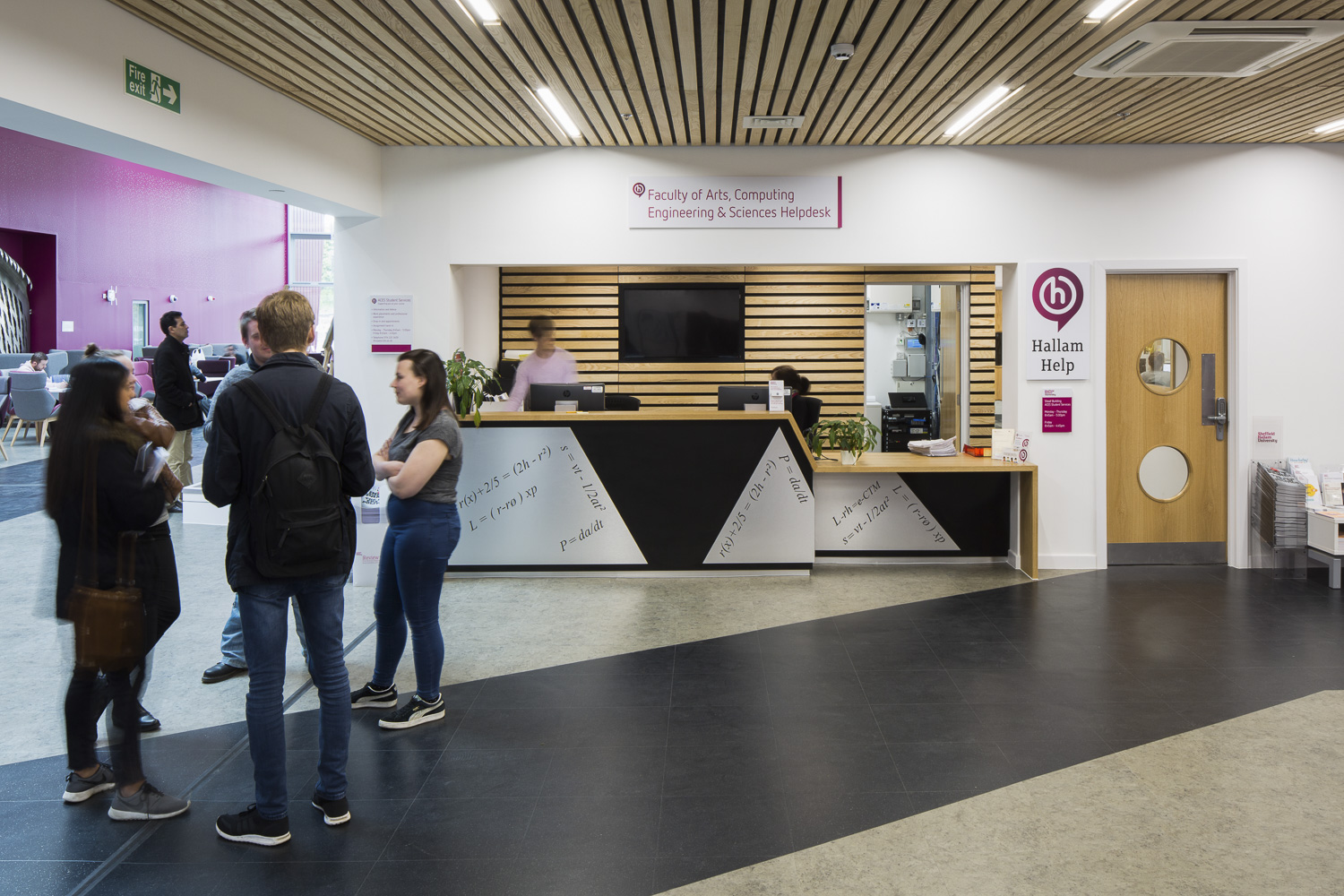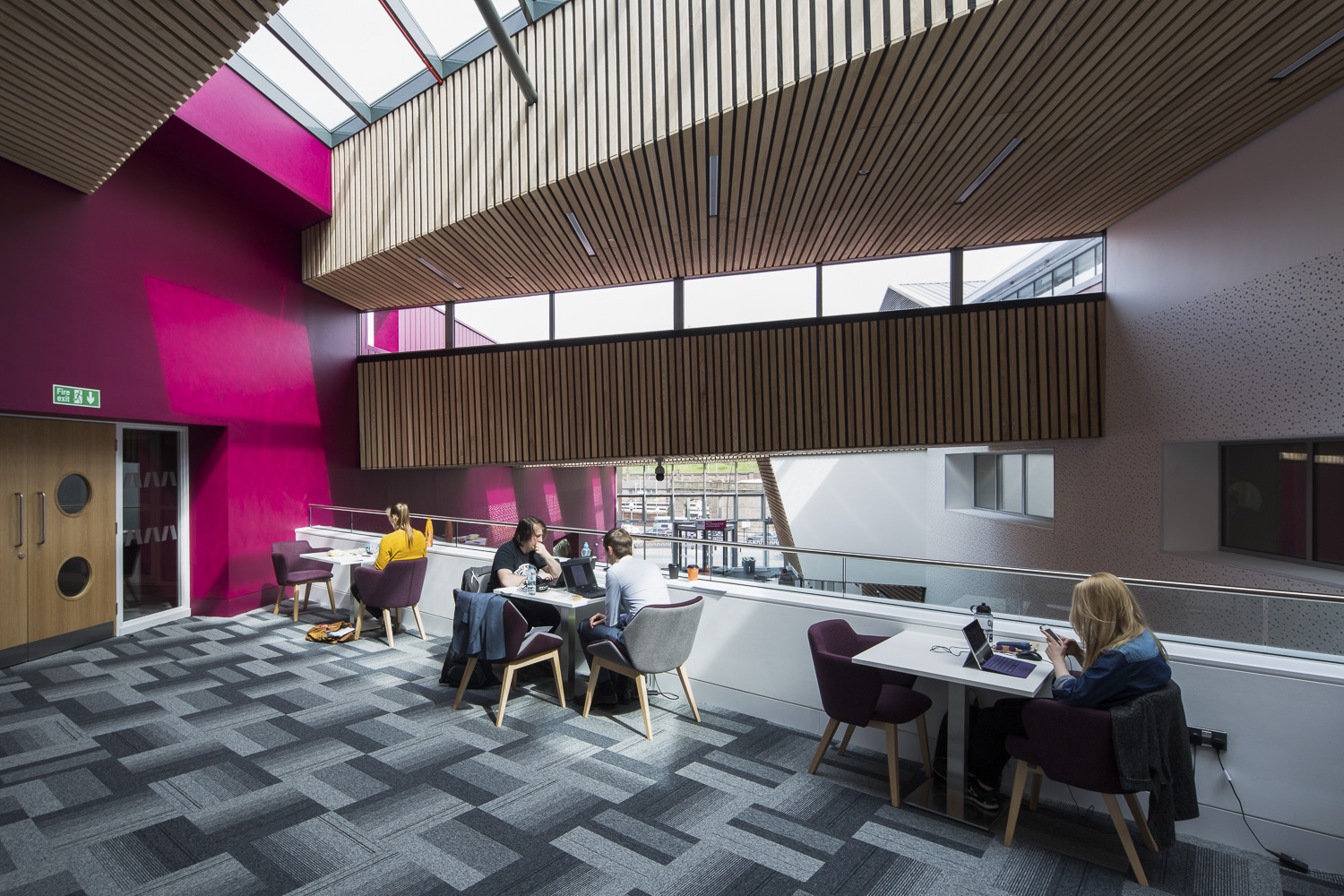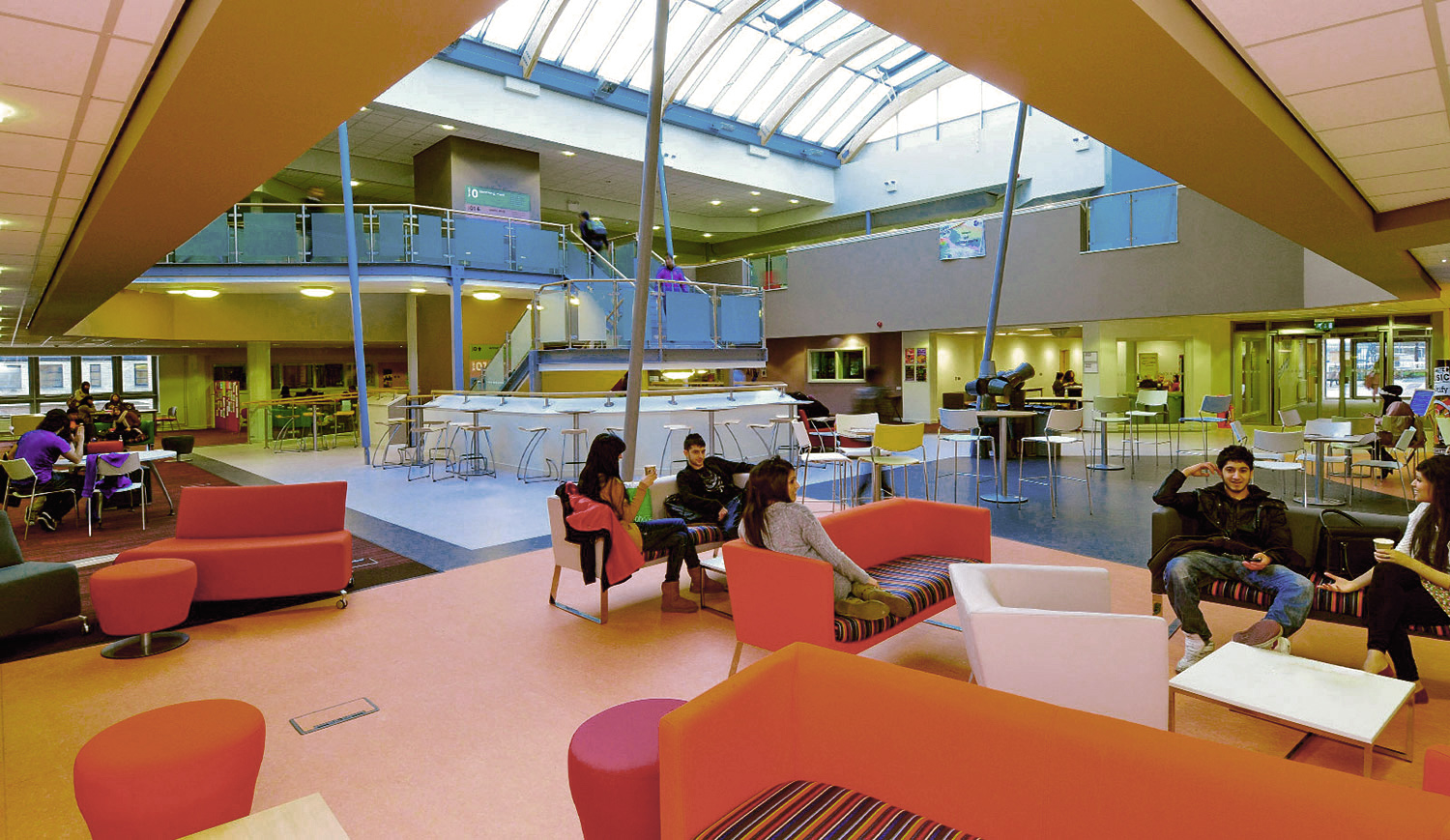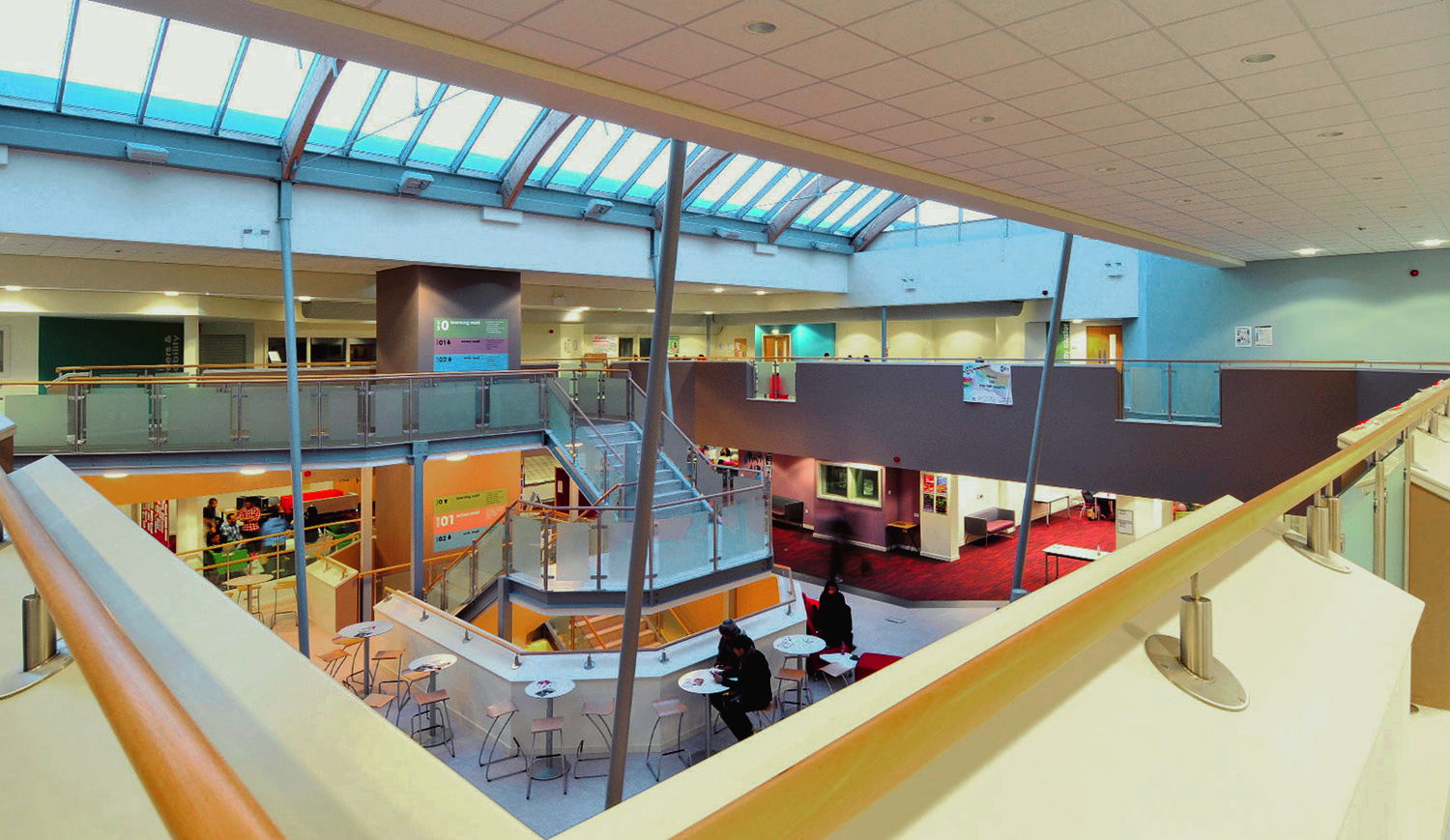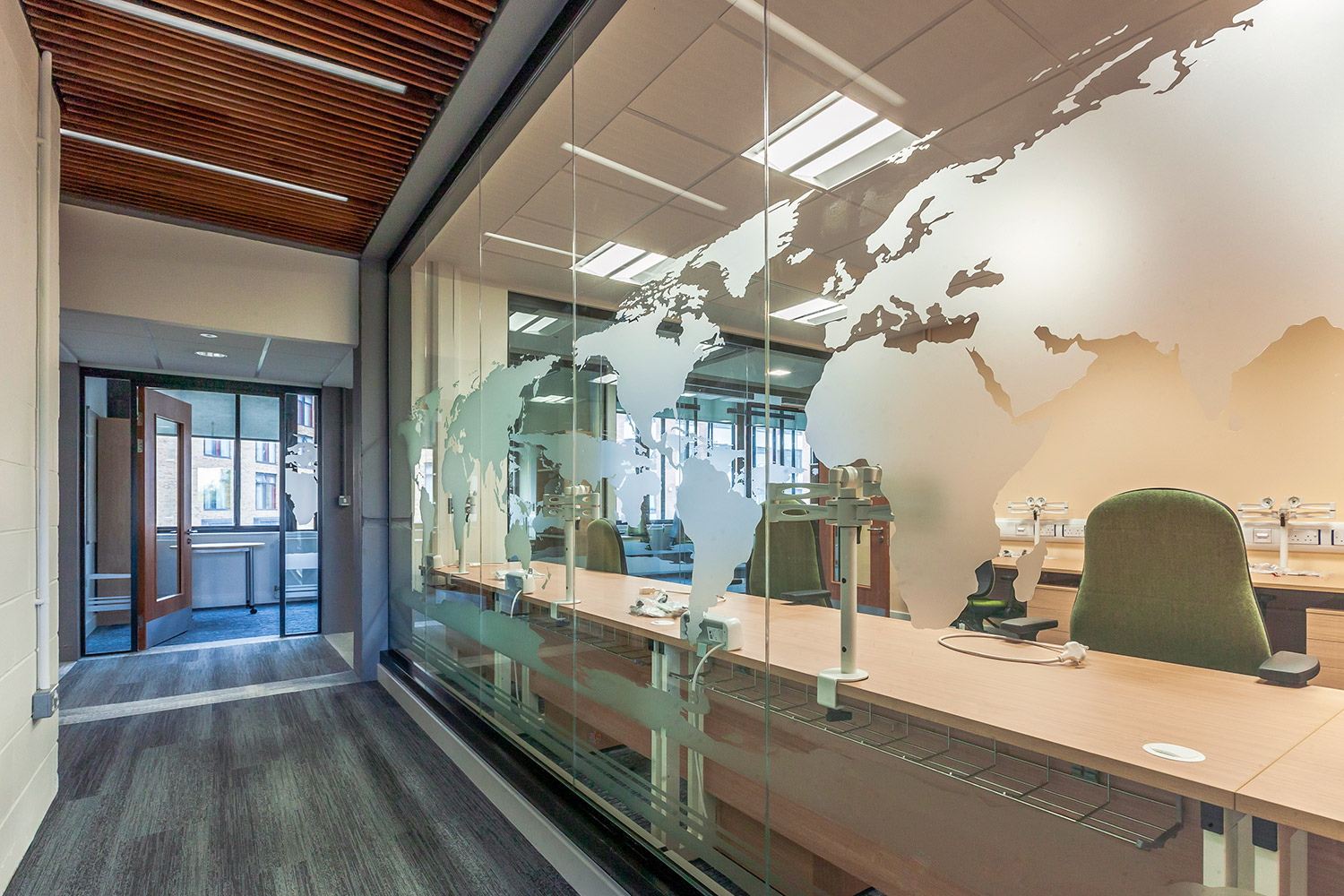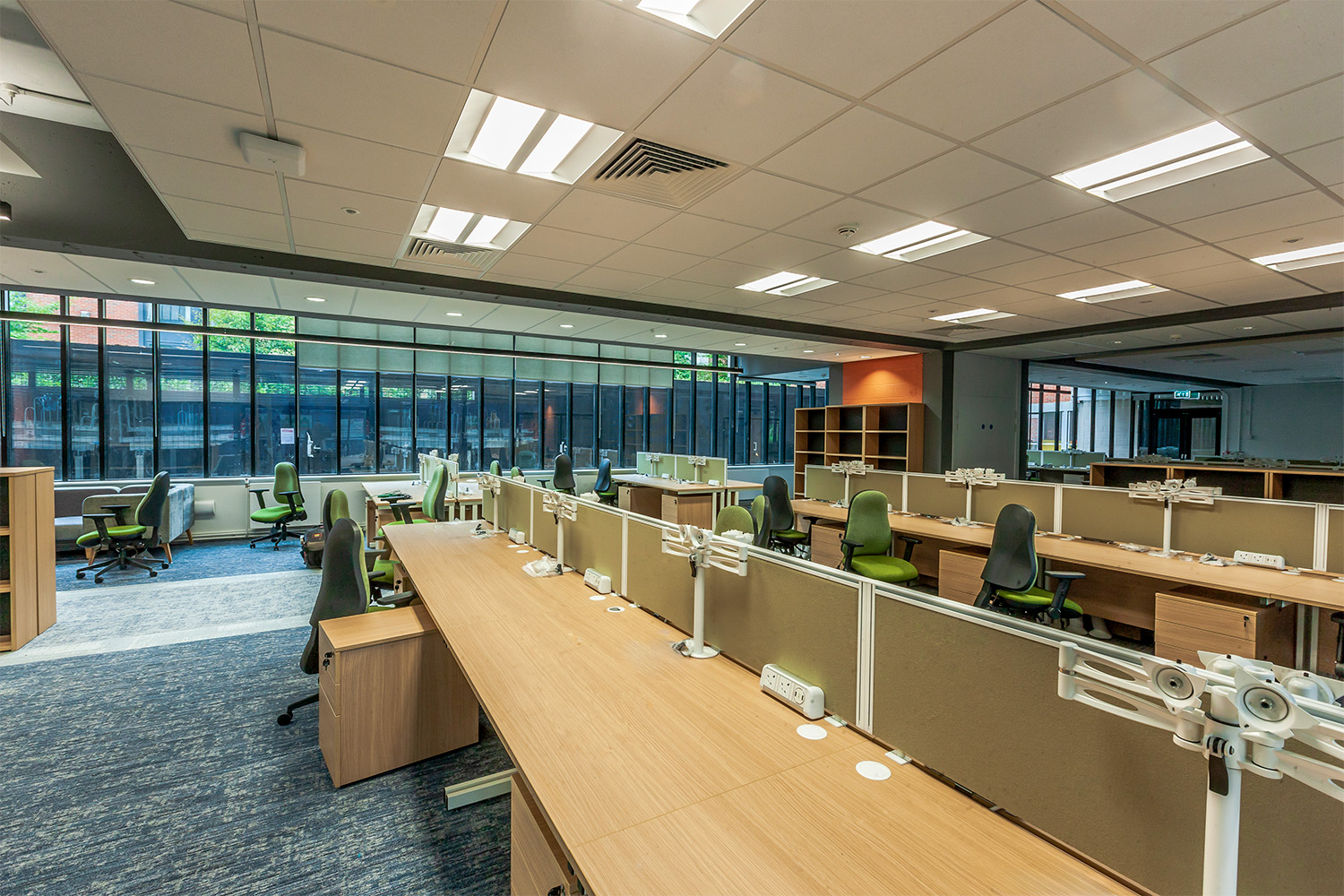HIGHER EDUCATION
Creating inspiring places to gather, collaborate, and learn is more important than ever
A student’s decision to participate in Higher Education is traditionally affected by socio-economic background, gender, ethnicity, and age. With internet access, students are overcoming these constraints by choosing to study from home with institutions all over the world.
Universities are addressing this behavioural shift by reforming their curriculum offerings and upgrading their physical estates. Many institutions are increasing hybrid learning to improve accessibility and allow students to work at their own pace. This can mean combining the physical classroom with virtual, purpose-designed learning platforms, which increase focus on immersive and experiential engagement so students develop skills that will endure in a changing world. Replacing some lecture-based teaching with active learning and employer-led apprenticeships helps reduce the education gap for socio-economically disadvantaged students, and those from traditionally marginalised backgrounds.
Nonetheless, physical interaction and collaboration with peers and instructors in well-designed, responsive spaces remains an essential part of learning. Our intuitive design work demonstrates our awareness of changes and a thorough knowledge of our clients’ needs.
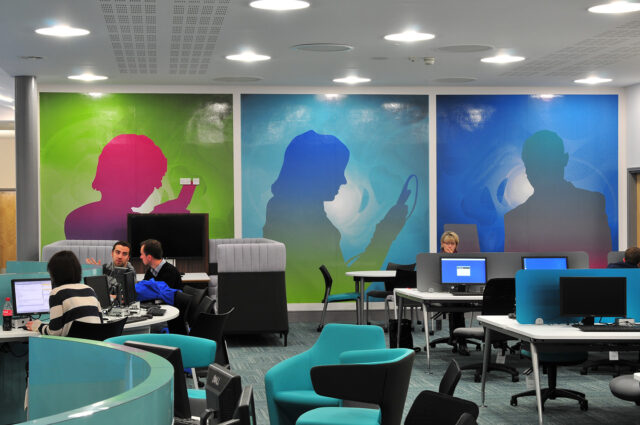
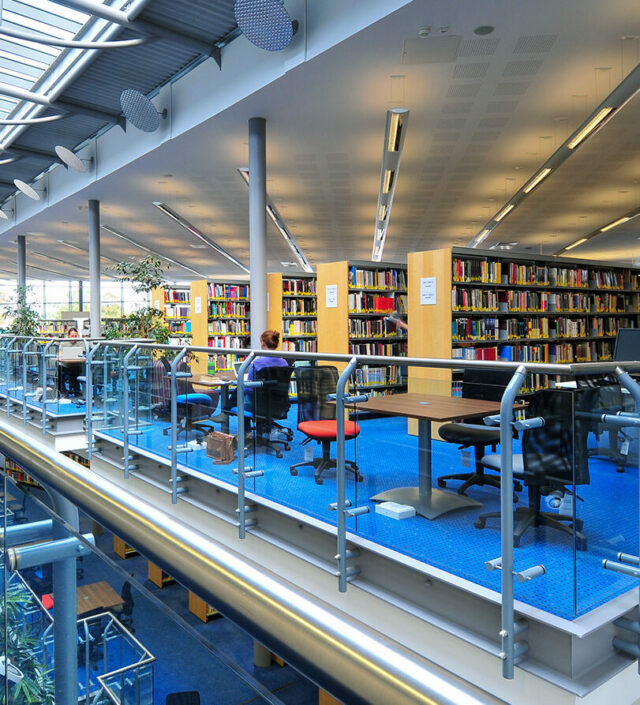
“It’s been a pleasure working with yourself and the wider management team. I honestly can’t recall a project in my 38+ years in the industry that has been executed so well and in such a true spirit of collaboration.”
Senior Project Manager, Henry Boot Construction
SHEFFIELD HALLAM UNIVERSITY – HERTHA AYRTON STEM CENTRE
Located within the city campus, the £11m re-development is the result of an interdisciplinary collaboration between the engineering, maths, chemistry, and biosciences departments.
The radical transformation of the 1960s Sheaf and Eric Menforth buildings creates an additional 11,500 sq.m. of modern facilities to support increasing numbers of STEM students. It now offers flexible, student-centred learning environments to nurture enterprising, work-ready graduates. The innovative design and technical solution enabled the introduction of cutting-edge robotics; automotive, electrical and chemistry laboratories; and a flight simulator suite.
A new atrium links the two re-modelled buildings, creating a vibrant social heart space. It is uplifting, flooded with natural light and full of activity and colour, with feature stairs, a café, a breakout area, and the student help desk/admin. Easy access welcomes in the public so future students can interact with work showcased in the exhibition forum.
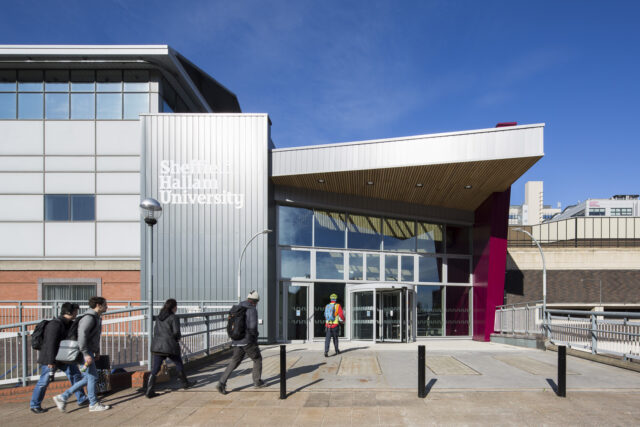
UNIVERSITY OF HUDDERSFIELD – STUDENT LEARNING & LEISURE CENTRE
Sitting at the heart of the Queensgate Campus and having a positive impact on the townscape, this six-storey development was commissioned to enhance the student experience by providing a single, welcoming point of access to student support services, the library, computing, sport, leisure, and catering facilities.
Achieving maximum adaptability within inspirational spaces was a core design philosophy. Our solution resolved complex issues relating to demolition, tying into existing floors and facades, and forming simple, effective connections between new and old, whilst meeting a demanding brief.
At entrance level, we created an extensive learning resource concourse and social space, which connects to support services and the library. The central 7,000sq.m. sports facility, Active Hud, incorporates a multifunctional arena with retractable seating for 900; squash courts; a 100-station fitness suite; multi-purpose studios; a treatment/physio room; and changing. It also contains a Vice Chancellor corporate suite.
So neighbouring buildings could remain operational, we helped devise a carefully planned six-phase construction programme which included the safe demolition of two campus buildings. Using BIM helped us produce the construction information quickly and accurately.
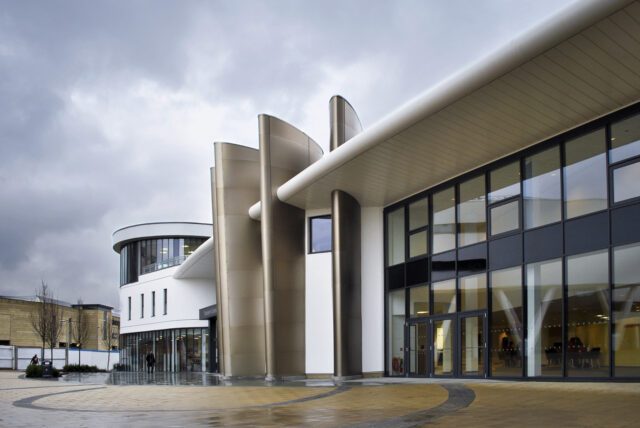
UNIVERSITY OF BRADFORD/LEEDS – WOLFSON CENTRE FOR APPLIED HEALTH RESEARCH
Located beside Bradford Royal Infirmary, this ‘go to’ centre enables university health researchers and hospital clinicians working in daily practice to collaborate on ways to increase patient safety, health, and wellbeing. Focusing on children and the elderly, it hosts a centre for child health and the Centre for Ageing, one of the UK’s most successful research groups. It provides open, accessible, and creative space, together with a range of flexible work and meeting areas for different disciplines and stakeholder groups to share ideas and help develop training programmes and curriculum content based on broader research.
Our design and technical team supported the contractor with project delivery from design development through to site construction. Working in a virtual collaborative environment using BIM Level 2, we ensured accurate design coordination that complied with statutory regulations and relevant design guidance. High levels of insulation and air tightness align with PassivHaus standards.
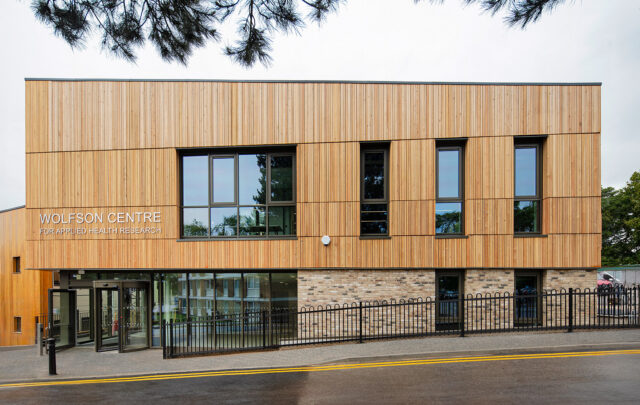
UNIVERSITY OF BRADFORD – STUDENT CENTRAL
The stunning refurbishment and extension of the former Student’s Union building was our first major project from the consultants’ framework. It brings together Student Services and the Union of Students to create a dynamic social and academic hub hosting diverse events.
Three pedestrian malls lead off a central four-storey atrium. The Learning Mall provides teaching rooms, lecture theatre, Careers and Disability Services, and a computer cluster. The Union Mall contains open group study spaces, Union offices, Advice Centre, Radio Ramair, counselling spaces, a shop, and a café. The Entertainment Mall offers meeting rooms, multi-functional nightclub, entertainment areas and bars, and an external patio.
We developed the design and construction information before novation to the contractor for the construction stage. Despite its challenging nature, the development achieved a BREEAM ‘Very Good’ rating, and the EPC rating leapt up from G to B.
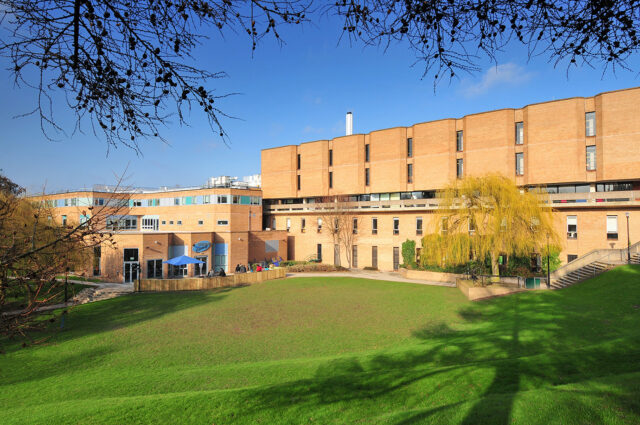
UNIVERSITY OF LEEDS – SCHOOL OF EARTH & ENVIRONMENT
This Grade II Listed, five-storey building was part of the original 1960s campus masterplan by architects Chamberlin, Powell, and Bon, famous for London’s Barbican. It houses international scientists tackling global issues in climate change, energy, water, and sustainable development.
Working in partnership with Henry Boot and the Council’s Planning and Conservation officers, we helped deliver extensive internal alterations and an extension that preserved elements of architectural interest.
We created open-plan office space, a welfare area, and meeting rooms out of an existing undercroft carpark, while a new mezzanine on an upper level provides further office and meeting space. To suit the space restrictions and protect the building and the safety of site workers, the team adapted the design to reduce the sizes of the new steel frame sections and glazed partitions going in at high level. Modelling in Revit enabled full design coordination.
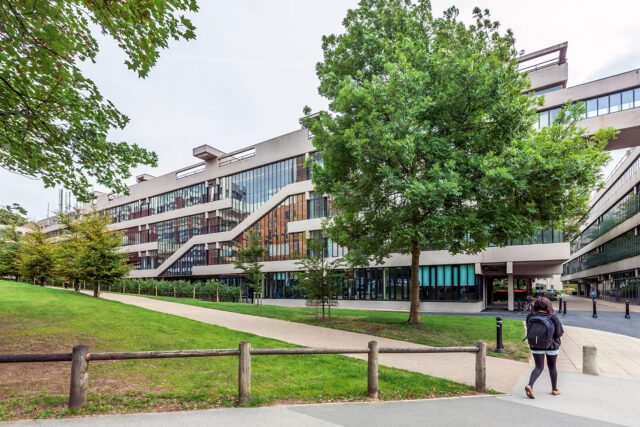
Newsletter
Lorem ipsum dolor sit amet, consectetur adipiscing elit. Mauris malesuada, mauris faucibus posuere lacinia, magna lorem consectetur nulla, quis sagittis justo nulla eu felis.
